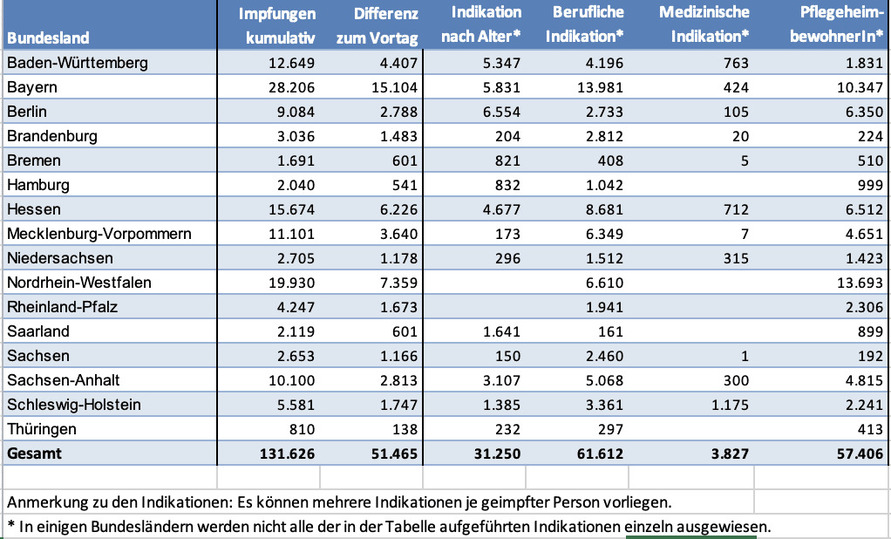According to the Robert Koch Institute (RKI), over the past day in Germany, the number of newly infected people has increased by 22 924, which is less compared to the previous day (32,552). In addition, deaths have increased by 553 in the last 24 hours. To date, more than 131,000 people across Germany have been vaccinated against Covid-19.
As of Friday, January 1, 1,742,661 cases of infection have been recorded in the country since the beginning of the collection of official statistical information on the coronavirus. The total number of deaths from Covid-19 to date is 33,624. The R value over 4 days is approximately 0.74.
The seven-day incidence for Germany is 141.9. This figure shows how many people per 100,000 inhabitants have been infected in the past seven days. The recommended incidence rate is 50, when the infectious situation is considered controlled and all infected can be monitored.
It is estimated that there are approximately 358,300 active cases, that is, people currently infected. This figure is not officially recorded by the Robert Koch Institute. However, as in other countries, it is determined by subtracting the number of deaths (33,624) and the estimated 1,350,800 recovered from all ever infected (1,742,661).
According to the Intensive Care Register, 5,639 people are currently being treated for Covid-19 in intensive care units. This represents approximately 23.4 percent of the approximately 24,000 intensive care beds in Germany.
Since the start of vaccination in Germany, the RKI has published the number of people who have already been vaccinated against Covid-19 every weekday. Currently, 131,626 people have been vaccinated (as of December 31):

A more detailed overview of the situation in individual federal states can be found here:
Baden-Württemberg: currently there are 129.4 registered persons per 100,000 inhabitants. More information here.
Bavaria: morbidity in 7 days 164.9 people per 100,000 inhabitants. More information here.
Berlin: morbidity in 7 days 126.9 people per 100,000 inhabitants. More information here.
Brandenburg: incidence in 7 days 196.6 people per 100,000 inhabitants. More information here.
Bremen: morbidity for 7 days 86.6 people per 100,000 inhabitants. More detailed information can be found here.
Hamburg: morbidity for 7 days 113.3 people per 100,000 inhabitants. More information here.
Hesse: morbidity for 7 days 132.2 people per 100,000 inhabitants. More information here.
Mecklenburg-Western Pomerania: morbidity in 7 days is 90.2 people per 100,000 inhabitants. More information here.
Lower Saxony: morbidity in 7 days 84.1 people per 100,000 inhabitants. More information here.
North Rhine-Westphalia: morbidity for 7 days 126.0 people per 100,000 inhabitants. More information is available here.
Rhineland-Palatinate: morbidity for 7 days 113.3 people per 100,000 inhabitants. More information here.
Saar: morbidity in 7 days 101.3 people per 100,000 inhabitants. More information here.
Saxony: morbidity in 7 days 334.5 people per 100,000 inhabitants. More information here.
Saxony-Anhalt: morbidity in 7 days 164.8 people per 100,000 inhabitants. More information here.
Schleswig-Holstein: currently 76.4 people are recorded per 100,000 inhabitants. More information here.
Thuringia: morbidity in 7 days 256.3 people per 100,000 inhabitants. More information here.
All important hotlines for health insurance companies, the Robert Koch Institute, as well as lists of medical institutions in all federal states and the best way to protect themselves: you can find out here.
Germany says this:
Where in Germany the largest traffic jams are expected in 2021
Child allowance will increase from January, as will supplements for low-income families
From what earnings in Germany you need to pay in health insurance
What is the amount in Germany to pay income tax in 2021